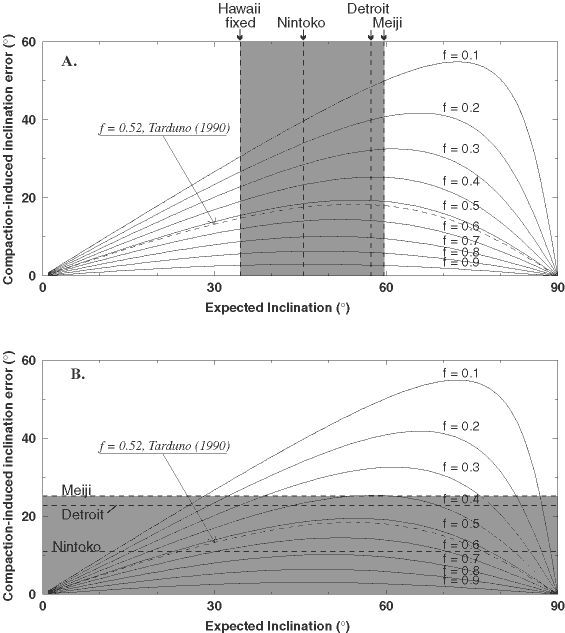
Figure 4. Inclination errors caused by sediment compaction plotted vs. expected inclination values. Curves show the relationship tan Io = f tan Ie, where Io = the observed (measured) paleomagnetic inclination, Ie = the expected inclination and f = a variable describing the degree of compaction-induced inclination shallowing. A value of f = 0.52 was derived from paleomagnetic analyses of deep-sea sediments from the Pacific plate (Tarduno, 1990). A. The gray box shows the range of inclination values expected for the fixed-hotspot vs. moving-hotspot hypotheses. The expected inclination value for a fixed hotspot is derived from Hawaii's current position, whereas values for Nintoku, Detroit, and Meiji are based on the hypothesis that their location along the Emperor trend records mainly motion of the Hawaiian hotspot. Because the hotspot-motion hypothesis predicts these Emperor seamounts formed at mid latitudes, errors in sedimentary inclinations induced by compaction will be near their maximum potential values, assuming flattening factors similar to those derived from Cretaceous deep sea sediments from the Pacific. B. The expected difference in inclination between the fixed-hotspot and moving-hotspot models (gray box and horizontal dashed lines) shown against compaction-induced inclination error curves. Given a flattening factor of 0.52, the potential error in sediment-based inclination is larger than the signal of hotspot motion proposed for testing for Detroit and Meiji seamounts, the error is two-thirds of the signal proposed for testing.
